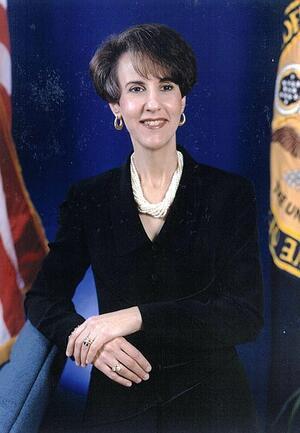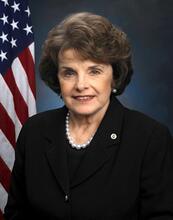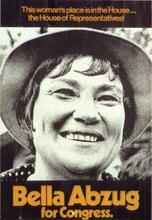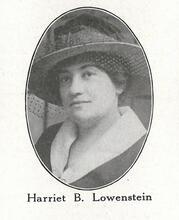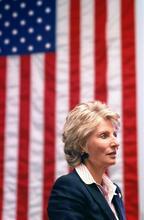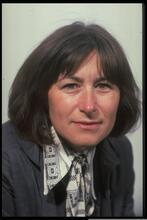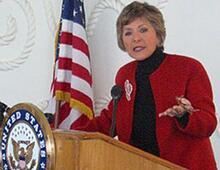Charlene Barshefsky
Charlene Barshefsky was a powerful proponent of free trade in Bill Clinton’s administration, where she served as the United States Trade Representative, a Cabinet-level post. Barshefsky spent eighteen years as a lawyer before beginning work for the Clinton administration. She served first as Deputy Trade Representative in 1993, overseeing Latin America and Asia, and then as Trade Representative from 1997 to 2001, negotiating vital trade agreements with Vietnam and Jordan and creating the Free Trade Area of the Americas. A determined advocate who earned the nickname “Stonewall” for her trade talks with Japan, Barshefsky was the primary negotiator who laid out terms for China’s entry into the World Trade Organization in 2001. After leaving government service, Barshefsky entered the private sector as a consultant and advisor.
During one of the most intense periods of conflict over international trade in American history, Charlene Barshefsky rose to prominence as arguably the nation’s chief advocate of free trade. The Cabinet-level United States Trade Representative from 1997 to 2001, Barshefsky played a crucial role in forging a new era of economic globalization under the leadership of President Bill Clinton.
Family and Education
Ambassador Barshefsky is married to Edward B. Cohen, a lawyer who served in the Interior Department during the Clinton administration. They have two daughters, Mari and Devra. Barshefsky grew up, along with her brother Alvin and her sister Annette (married name Weinshank), on the North Side of Chicago. Her father Gustave, a chemical engineer who died in 1995, was a Polish immigrant, and her mother Miriam, a retired substitute teacher, immigrated from Russia.
Barshefsky graduated from Von Steuben High School in 1968 and then proceeded to the University of Wisconsin, where she specialized in political theory and received her bachelor’s degree in 1972. A law degree from Catholic University, where she finished seventh in her class, followed three years later.
Career
Before joining Clinton’s economic team, Barshefsky worked for eighteen years at the Washington law firm of Steptoe and Johnson, where she eventually earned half a million dollars a year as co-head of the firm’s international law practice. Although she had no political experience, Clinton’s first trade representative, Mickey Kantor, tapped Barshefsky as his deputy responsible for Latin America and Asia in 1993; she became Kantor’s second-in-command in late 1994. She quickly won widespread plaudits as a tenacious negotiator, gaining the title of “Stonewall” after some particularly difficult trade talks with Japan. When a plane crash took the life of Commerce secretary Ronald H. Brown, Kantor assumed Brown’s position; Clinton then named Barshefsky acting trade representative in April 1996. After concerns about her previous legal representation of Canadian lumber interests were put to rest, the Senate confirmed Barshefsky as the permanent trade representative in March 1997.
During the Clinton years, the post of trade representative went from the political margins to the center not only of economic but also of foreign policy. Barshefsky frequently remarked on how trade relationships are now the most significant way that nations associate with each other. Barshefsky and her fellow Clintonites combined this insight with a crusading zeal for free trade agreements that, they argued, would bring peace and prosperity to the post-Cold War world.
During her years in office, Barshefsky negotiated landmark trade agreements around the globe. Her accomplishments include pioneering accords with countries such as Vietnam and Jordan. Pushing beyond the North American Free Trade Agreement, Barshefsky negotiated an economic zone known as the Free Trade Area of the Americas. Her biggest success came in a historic agreement with China that opened up many of that giant country’s markets and facilitated China’s entry into the World Trade Organization.
Barshefsky’s prodigious feats were not accomplished without controversy. Labor unions protested the loss of well-paid jobs, and environmental groups decried the lack of protections for nature in the new global agreements. Human rights advocates expressed their concerns about cooperating with countries like China on economic issues without pressing their governments on such matters as torture and lack of political freedom.
The protest against the policies of globalization advocated by Barshefsky culminated in the tumultuous “Battle for Seattle.” In late 1999 the World Trade Organization met in that city to hammer out large-scale free trade agreements for the new millennium. A disparate group of protesters, united in their conviction that multinational corporations stood to benefit disproportionately from such agreements, blocked the streets of Seattle and prevented many delegates from attending meetings. While the core of the anti-globalization movement was determinedly non-violent, some self-proclaimed anarchists did set out to damage corporate property; the police, in turn, themselves responded with considerable violence. Combined with significant conflicts within the WTO, particularly between poor and rich nations, the protests led to the WTO’s failure to act on its grand agenda.
Gender and Religious Identity
While Barshefsky herself did not often call attention to matters of gender, being a woman became a significant part of the media profile she developed while holding political office. Although few if any commentators commented on Mickey Kantor’s ties, Barshefsky’s imported designer silk scarves were not infrequently noted, as was her hairstyle. And while few male government officials are asked how much they help with their children’s homework, Barshefsky was, proudly noting that she almost never missed school plays or concerts and that she toted Macbeth on her trans-oceanic flights so that her daughter could call on her for help with the Bard. That said, Barshefsky herself observed in a long 1996 New Yorker profile that she had found the prospect of taking such an immensely time-consuming government job “very threatening,” a possible “dreadful mistake” because of the time it would take away from her children, who were nine and four when she took office.
Barshefsky herself also actually suggested that, because she was particularly attuned to personality and body language, being a woman possibly provided an edge at the bargaining table. And while Barshefsky attributed most of her success to her rank and general negotiating skills, even one of Barshefsky’s female friends commented on the “intuitive” nature of Barshefsky’s negotiating style. Barshefsky never did consider it necessary or important to take up a public mantle of feminism. She did, however, get into temporary hot water at the White House when she blamed the United States’ 1999 bombing of the Chinese embassy in Belgrade on men’s inability to ask for directions.
In contrast to her gender the media has made almost no substantive exploration of her ethnic or religious identity. Barshefsky is known to be Jewish. She has spoken, for example, of helping a daughter learn her Lit. "daughter of the commandment." A girl who has reached legal-religious maturity and is now obligated to fulfill the commandmentsbat mitzvah Torah she-bi-khetav: Lit. "the written Torah." The Bible; the Pentateuch; Tanakh (the Pentateuch, Prophets and Hagiographia)Torah portion while on an expensive international airphone. Yet the most visible public invocation of Barshefsky’s Jewishness ironically almost seemed to negate it.
Before the start of fall classes in 2002, Harvard President Lawrence Summers controversially reflected on what he regarded as the resurgence of antisemitism at his university and around the world. The Jewish Summers—who had himself served as secretary of the Treasury—argued that the rise of anti-Jewish sentiment contrasted with the historically significant lack of concern when Bill Clinton appointed a “very heavily Jewish” lineup of economic policymakers that included not only Barshefsky but also Treasury secretary Robert Rubin and Federal Reserve chairman Alan Greenspan. In this narrative, the career of Charlene Barshefsky became simply one more sign of the successful assimilation of Jews into the top leadership of the United States.
Later Career
Upon leaving the Clinton administration in 2001, Barshefsky joined the Woodrow Wilson International Center for Scholars in Washington, D.C. Later in 2001 she became a Senior International Partner at Wilmer, Cutler and Pickering, a law firm with heavily Democratic connections. She appeared frequently on television as a commentator on international business matters, and her negotiation strategies are used as lessons at such prestigious institutions as the Harvard Business School. Barshefsky served on a number of corporate boards and was active in the Council on Foreign Relations, the America-China Society, and the Trilateral Commission.
In June of 2012, Barshefsky joined the international law firm WilmerHale as a Senior International partner, focusing on business and market law. In 2010, she was named "The Decade's Most Influential Lawyers", and in 2013 the National Law Journal listed her as among the "100 Most Influential Lawyers in America." In 2017, she was named to the inaugural Legal 500 US Hall of Fame list.
Barshefsky retired from law in 2021 and resides with her husband in Washington, D.C.
Selected Works:
with Alice L. Mattice, and William L. Martin. "Government Equity Participation in State-Owned Enterprises: An Analysis of the Carbon Steel Countervailing Duty Cases." Law & Pol'y Int'l Bus. 14 (1982): 1101.
"Non-Market Economies in Transition and the US Antidumping Law: Remarks on the Need for Reevaluation." BU Int'l LJ 8 (1990): 373.
"Trade policy for a networked world." Foreign Affairs (2001): 134-146.
with Julia E. Sweid, and James T. Hill. US-Latin America Relations: A New Direction for a New Reality: Report of an Independent Task Force. Vol. 60. Council on Foreign Relations, 2008.
Donohue, William A. "The Power of Politeness in Negotiation: The Charlene Barshefsky Conversations." Negotiation Journal 36, no. 2 (2020): 213-215.
Sebenius, James, and Rebecca Hulse. "Sequencing, acoustic separation, and 3-D negotiation of complex barriers: Charlene Barshefsky and IP rights in China." International Negotiation 8, no. 2 (2003): 311-338.

